Namibia was one of the most rugged trips I’ve embarked on to date. The vast and desolate nature of this countries landscapes are what makes it both enticing, and challenging. It is truly the holy grail for adventurous travelers. But there are some things you must know before you go, to ensure a smooth trip. Here is a list of safety tips for traveling in Namibia, and some huge mistakes I made that you can avoid.

Before You Go
Consider Hiring a Driver
The only way to get around Namibia is to drive. There is no public transport outside of the city, and air travel is limited. You must either prepare to spend many hours a day, driving on difficult roads, or opt to hire a driver.
This would of course cost more than self driving, but a local driver would be much better adapted to driving in Namibia, and it would take a lot of pressure off of you, the visitor.
If you don’t want to hire a driver, you absolutely don’t need to. I went without hiring a driver, and so do many people.
Have Proper Insurance
There are just too many things that can go wrong in Namibia to not get good insurance. That goes for both car and travel insurance. I used both on my trip, and I am grateful I had them.
You could get injured in a car accident, like I did. It’s also possible to sustain some injuries while riding ATVs on the sand dunes, or while doing some other activities.
As far as car problems go, in Namibia the chances are high. Almost everyone pops a tire at least once. That will cost you hundreds of dollars out of pocket, so you’ll want to have insurance to refund you.
Also huge tip: if you are driving from South Africa, your rental car coverage will likely not cover a lot of things once you are in Namibia. For this reason, it’s truly a wise choice to just fly into Namibia, and rent a car from there.
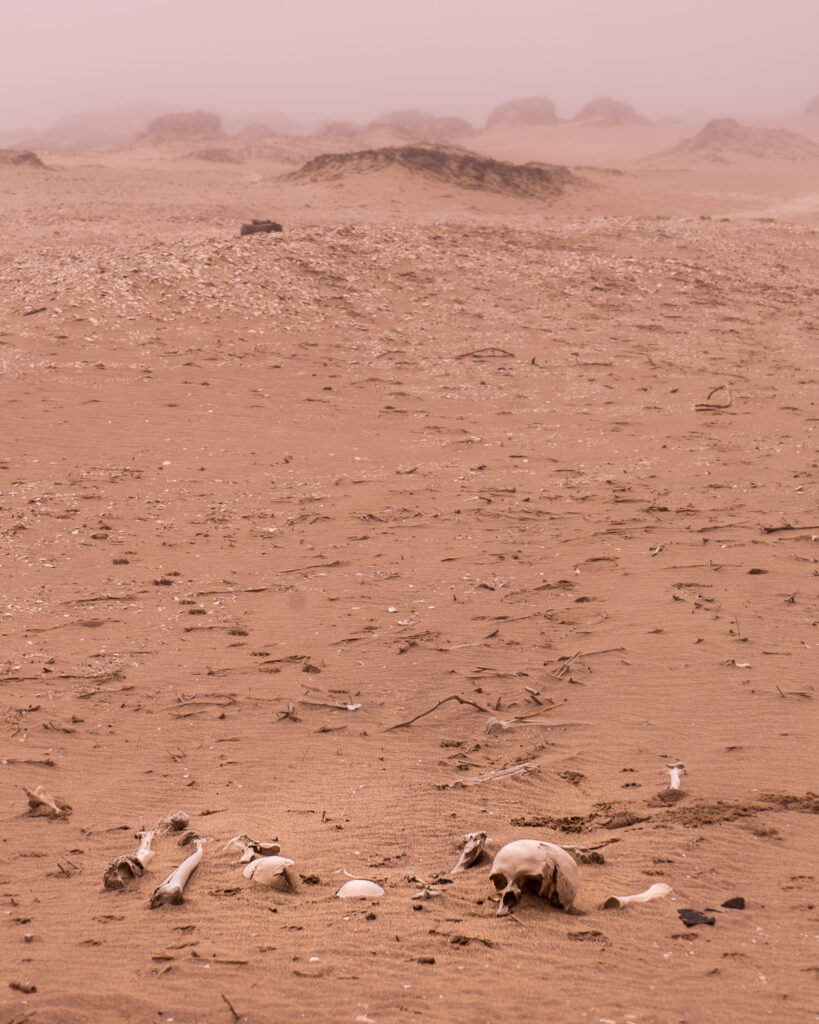
Bring Mosquito Spray
Parts of Namibia are malaria risk zones. This includes the popular Etosha Park, which many tourists include in their itinerary.
No matter what season you plan to go, it’s a good idea to have mosquito repellent. We were camping in the desert during the dry season, with no water source in sight, and I still got a lot of mosquito bites.
When You Arrive
Rent a 4 x 4 Car
I can’t stress how important this is. Not to be dramatic, but skimping on this may cost you your life. The roads in Namibia are treacherous, if we can even call them roads. They are more like narrow, gravel paths that connect the far, and few between cities.
I will admit, we skipped out on this initially and got into a huge car accident that nearly ended our trip, or worse, our lives. We were headed to Sossusvlei, on a road taken by most tourists. It’s very easy to lose traction on the gravel, and ultimately lose control of your vehicle, which we did. For us, that meant swerving into the opposing lane, and flipping over into the desert.
We were informed that many people crash on the same stretch of road we did, a number of which do not survive. Don’t be one of them. Having a 4 x 4 is an absolute must. You’ll need it to stand a chance on these roads.
We rented from Thrifty , which offered fair prices by local standards. When we got into an accident, they took care of us. They arranged for someone to pick us up, tow our totaled rental car, and replaced it with a proper one for the rest of our trip.
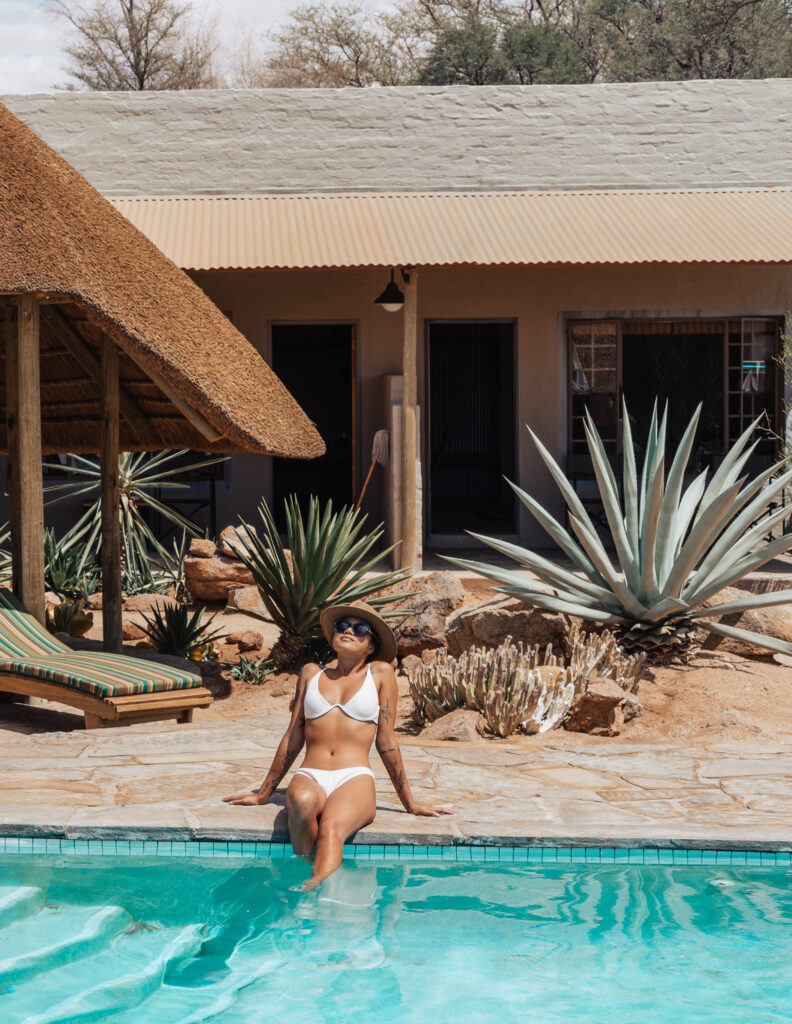
Get a SIM Card
When you arrive at Windhoek Airport be sure to get a prepaid SIM card for the duration of your stay. There are only two network providers in Namibia, and the one with the best coverage is MTC. You can find their kiosk in the arrivals terminal once you land.
It’s very affordable, and in most areas, I was able to get at least 3G service.
This SIM card will be necessary in the event you have car troubles or an emergency, you’ll be able to contact the police or someone to assists you. Namibia is an extremely remote country, and if you were to be stuck on the road needing help, it may take a while for someone to pass you.
Safety Tips For the Road
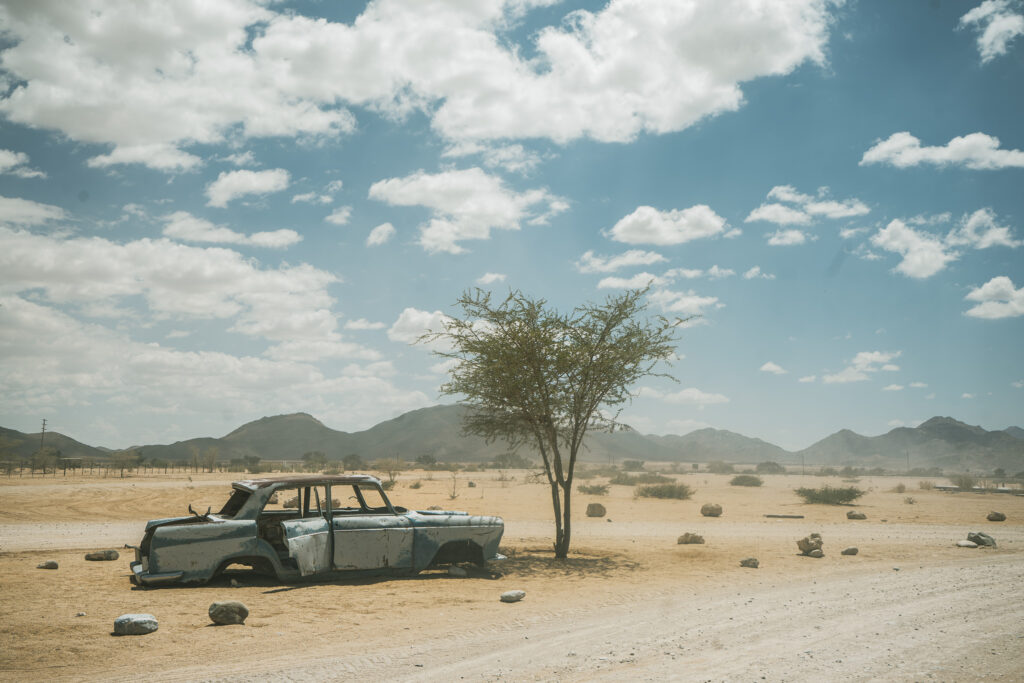
Have More Than One Spare Tire
This one is optional, but strongly advised. If your trip will be longer than a week, or will take you to very remote areas such as the Skeleton Coast or Down to Fish River Canyon, it is highly likely you will pop more than one tire.
We popped one tire on our 2 week trip. While we were fixing it, not a single car drove by, and there was no cell service. Imagine if that happened, and we ran out of spares? Who knows how long we would have been stuck there.
Do Not Drive at Night
This was advice given to us by many people. The roads in Namibia are already challenging enough during the day, it’s really just too risky to drive at night. Plus, if you have an accident, you’ll be waiting until morning until someone can assist you.
Do Not Speed
This is probably the most important of all the safety tips for traveling Namibia. Although we made the initial mistake of renting the wrong car, the speed was actually the main reason we got into a car accident. There are parts of the road in Namibia that seem ok, but don’t be fooled. In just a split second, it could change. Outside the city, expect for all roads to be unpaved.
Most roads are covered in loose gravel, sometimes very deep gravel, and you should take extreme caution. Driving on gravel should almost be treated like driving on ice. It’s very easy to lose control, and just not worth it to try and drive fast.
A safe speed is 60 kilometers an hour when driving on gravel.
Know Where Your Nearest Hospital Is
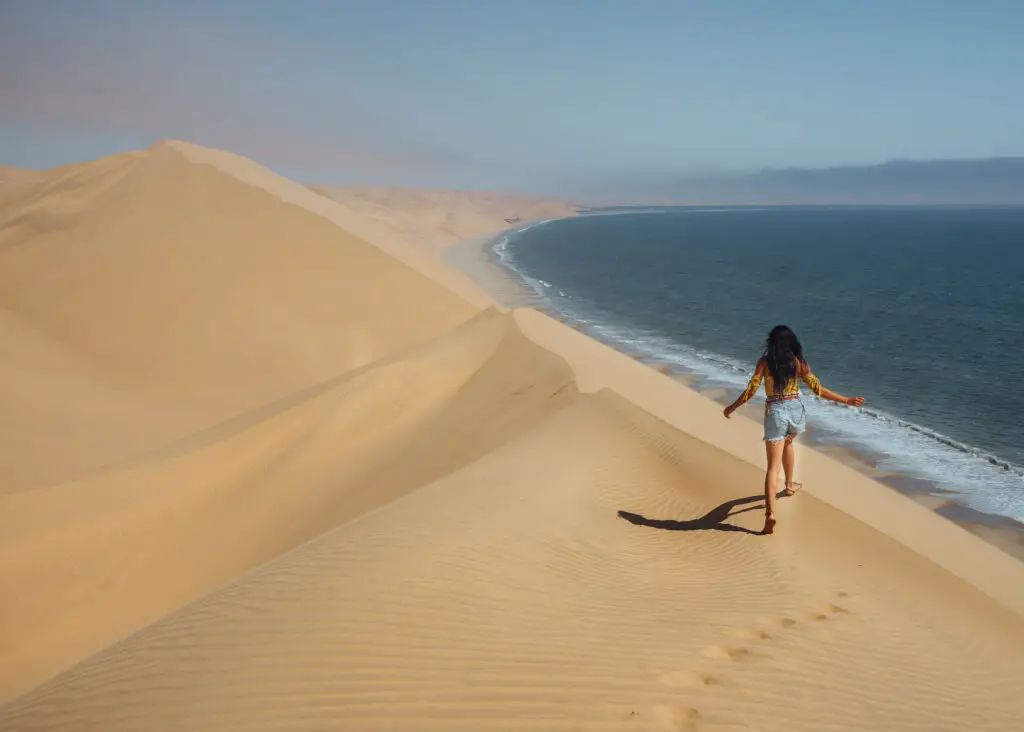
Namibia is unique in the sense that it’s extremely untouched and uninhabited in most areas. That means, you’ll have long stretches of driving to get from one location to another. It’s worthwhile to note that hospitals are really only located in the cities. That includes Swakopmund, Walvis Bay, and the capital, Windhoek.
I needed medical attention after our car accident near Sossusvlei. The nearest one was in Walvis Bay, which took a full day of driving to reach.
It may be wise to have some idea of where the nearest hospital to you is, at all times. That way, should an emergency arise, you have an idea where you must go and how long it will take. This will let you plan and act swiftly, when needed.
Bring Food and Emergency Supplies
Again, this may seem unnecessary, but it’s better to be safe than sorry. In Namibia it’s not uncommon to spend the entire day on the road. Don’t expect to pass by lots of fast food shops or rest stops on the way, like you may expect in your home country. Namibia is very sparsely populated, and you will sometimes go hours without seeing a single sign of life.
This is part of what makes a road trip in Namibia so exciting. You are getting the real deal, a truly wild and rugged adventure. However, should something happen to your car and you get stuck out there, it’s just you and miles and miles of wilderness to the nearest town.
Before leaving Windhoek, I suggest going to a supermarket and buying non-perishable food and lots of water. We bought a weeks worth of water and enough food to last a couple days, in case we had an emergency. I would also suggest picking up emergency supplies such as a flashlight, antiseptic, etc. Anything else you would normally bring on a backpacking trip, applies here.
The water, we drank during the trip. As for the food, we luckily didn’t need it, so we ate it while camping in Spitzkoppe towards the end of our stay. That way, nothing was wasted in the end.
Having these things prepared gave us peace of mind, in the sense that if we were stranded in the wild, we knew we would have been ok for a few days.
Watch Out for Wild Life
While driving across Namibia, you may be lucky enough to spot some wildlife. As for us, we ran into some ostriches on the way to Walvis Bay. Luckily, the gravel roads make it difficult to drive fast (at least you shouldn’t be) so we had no trouble avoiding them.

Safety Tips in the Desert
Avoid Stepping on Scorpions or Snakes
I hired a local guide for part of our trip, and he informed us about the animals that inhabit the desert. I will spare the details, but as you may have guessed, it’s full of dangerous, venomous, and often undetectable creatures.
Two of these are scorpions and snakes. A big tip he gave us, was obviously to avoid walking barefoot, or in uncovered shoes in the desert. Another thing to avoid is stepping on or near the little shrubs or bushes.
These are generally where these animals like to hide during the day, and stepping on them while they are sleeping is a huge recipe for disaster.
The desert may look empty to the naked eye, but always keep in mind, many animals call this place home. Some of which, an encounter with could be deadly. Take caution while exploring this inhospitable landscape, and you should be fine.
Do Not Get Stuck in Sand
Even with the proper vehicle, and all the safety precautions in the world, driving on sand may be a challenge. Some areas, such as the ultra-popular Deadvlei, can only be reached by driving through the desert sand.
It’s pretty deep in some areas, and we got stuck a few times. Luckily, there is a bit more traffic in this area, and people always stopped by to help us. One car that did help us, also got stuck.
The trick to driving through sand it to deflate your tires a bit, and go at a constant speed, without ever slowing down. If this sounds like too much for you, opt to hire a driver for these parts of your trip. If you are in Sossusvlei, ask about the shuttle.
Watch Out for Quick Sand
I thought quick sand was just something made up in movies, but it’s very real and very much a problem here. For example, if you plan to visit Sandwich Harbor, where the sand dunes meet the ocean, you are going to be faced with a very challenging journey.
Even with the right car and driving capabilities, I really recommend hiring a guide for this journey. For one thing, quick sand is nearly undetectable. The guides are knowledgeable and know this area well, and they are the only ones who know how to avoid it.
Safety Tips in The City
Keep Valuables Hidden
While Namibia is quite safe in comparison to its neighbor, South Africa, crime and theft does still occur. Keep valuables stashed away in a safe place at all times, including inside your parked vehicle.
Be Wary of the Taxi Drivers
While I was in Swakopmund, our driver was almost hit by a speeding taxi. Our driver went on to explain that this was common behavior for Namibian taxi drivers.
In fact, in Namibia the unlawful driving practices of local taxis result in a huge majority of the annual road accidents. If you see them coming, keep in mind that they may not respect your rights as a pedestrian, and you should proceed with caution as to not get hit.
Avoid Walking Around Late at Night
Again, Windhoek is pretty safe for a capital city, but normal precautions should still apply. Our hotel advised us that it is perfectly safe to walk around, just not too late after dark.
And that wraps up my list of safety tips for traveling in Namibia. It may sound like a lot of extra precautions, but the trouble is worth it. Namibia is an exhilarating destination that will make you feel alive. And, you will surely make it out alive, if you follow all these tips!
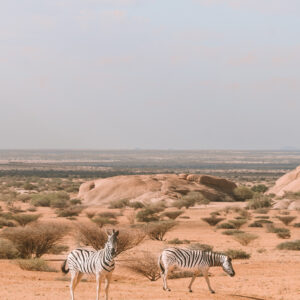 2 Weeks in Namibia: Planning an EPIC Namibia Self Drive Trip
2 Weeks in Namibia: Planning an EPIC Namibia Self Drive Trip



Great tips for travelers planning a trip to Namibia. Very practical, helpful advice, and perfect photos.
Excellent information and I’m sure very valuable tips. It’s beautiful and crazy how it goes from super rugged and isolated to the beautiful pool you relaxed next to.
Perfect tips, love the rugged terrain as described in your post. Sounds like the perfect adventure in a desert, thanks for sharing!